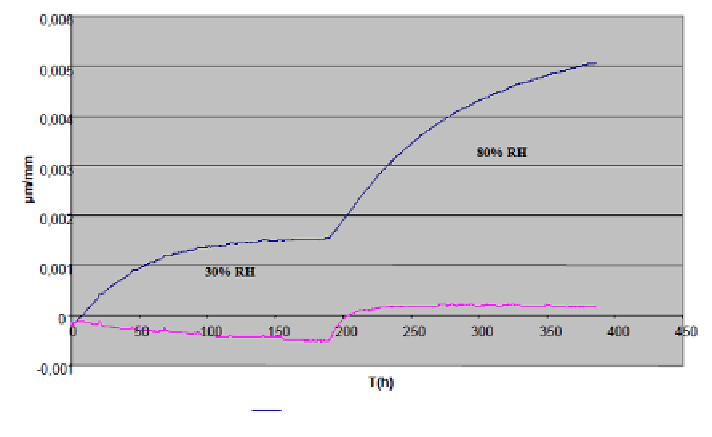Environmental Engineering Reference
In-Depth Information
diffusion resistance coefficient should not be higher than 30% of the original
(adobe) material's coefficient [SAS 96].
The disadvantage of the bitumen plaster seems to be its behavior under varying
relative humidities. The adobe presents a hygroscopic dilatation equal to 5 mm/m
due to its smectite (expansive clay) content, while the bitumen plaster reveals a
movement 30 times below that of the adobe (see Figure 11.20). The bitumen film
covers the clay particles and prevents their dilatation. This property might be useful
for stabilizing the earthen material as a full adobe block. However, the application of
an inflexible plaster on a swelling support may cause deformation leading to the
detachment of plaster or creation of fissures inside the adobe brick.
Adobe
Plaster 3.5%
Figure 11.14.
Hygroscopic dilatation of the adobe brick in comparison with
3.5% by weight bitumen plaster
Aesthetically, the bitumen plaster obviously changes the original earth color; the
higher the bitumen content, the darker the plaster and the outside face of the
building.
11.2.3.1.2. Sources of weathering
Cross-examining field observations and experimental analysis, liquid water
seems to be the main source of decay for bitumen plaster. A cyclic water saturation
of the plaster (repetition of water uptake measurements) shows an increase in the

